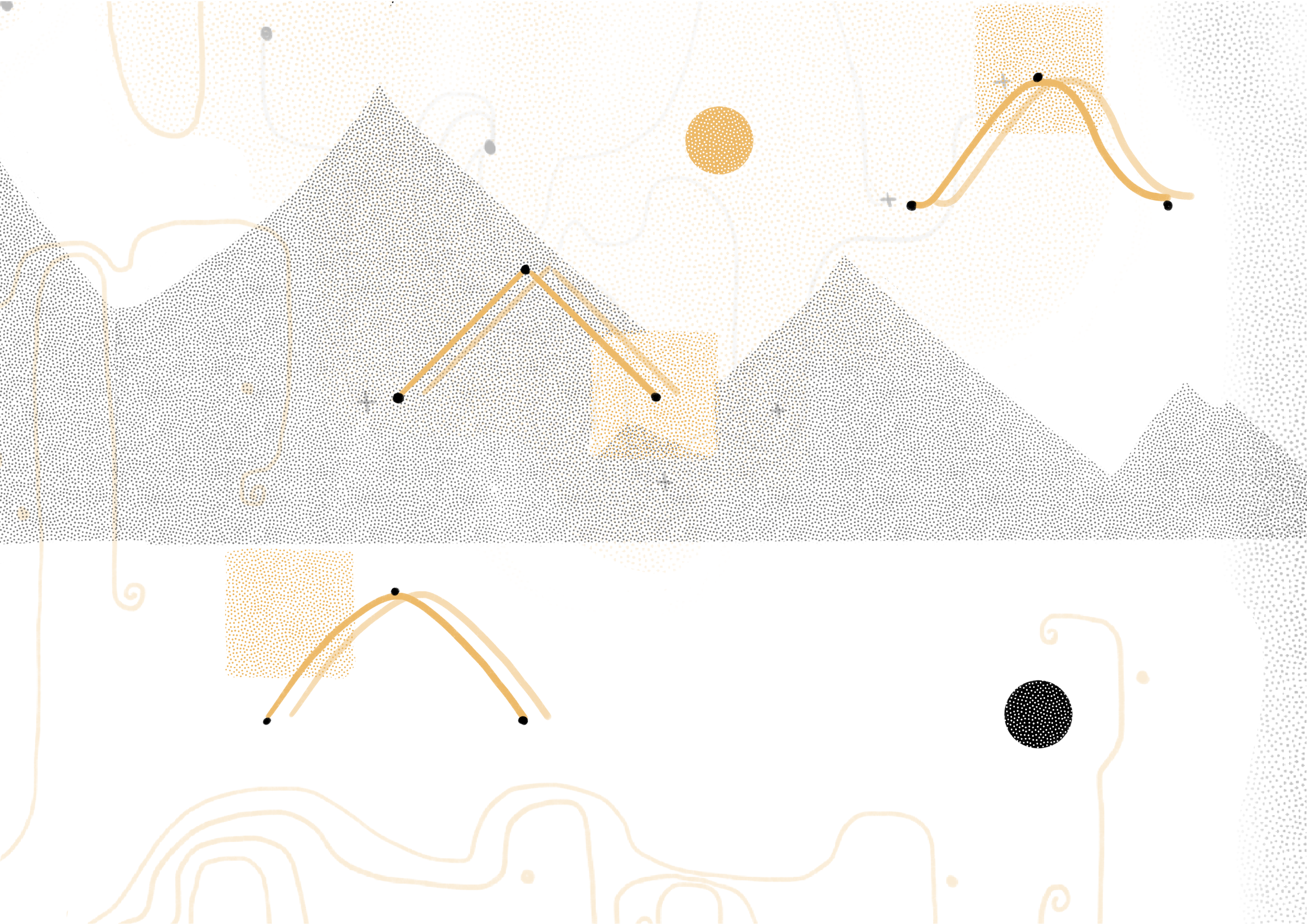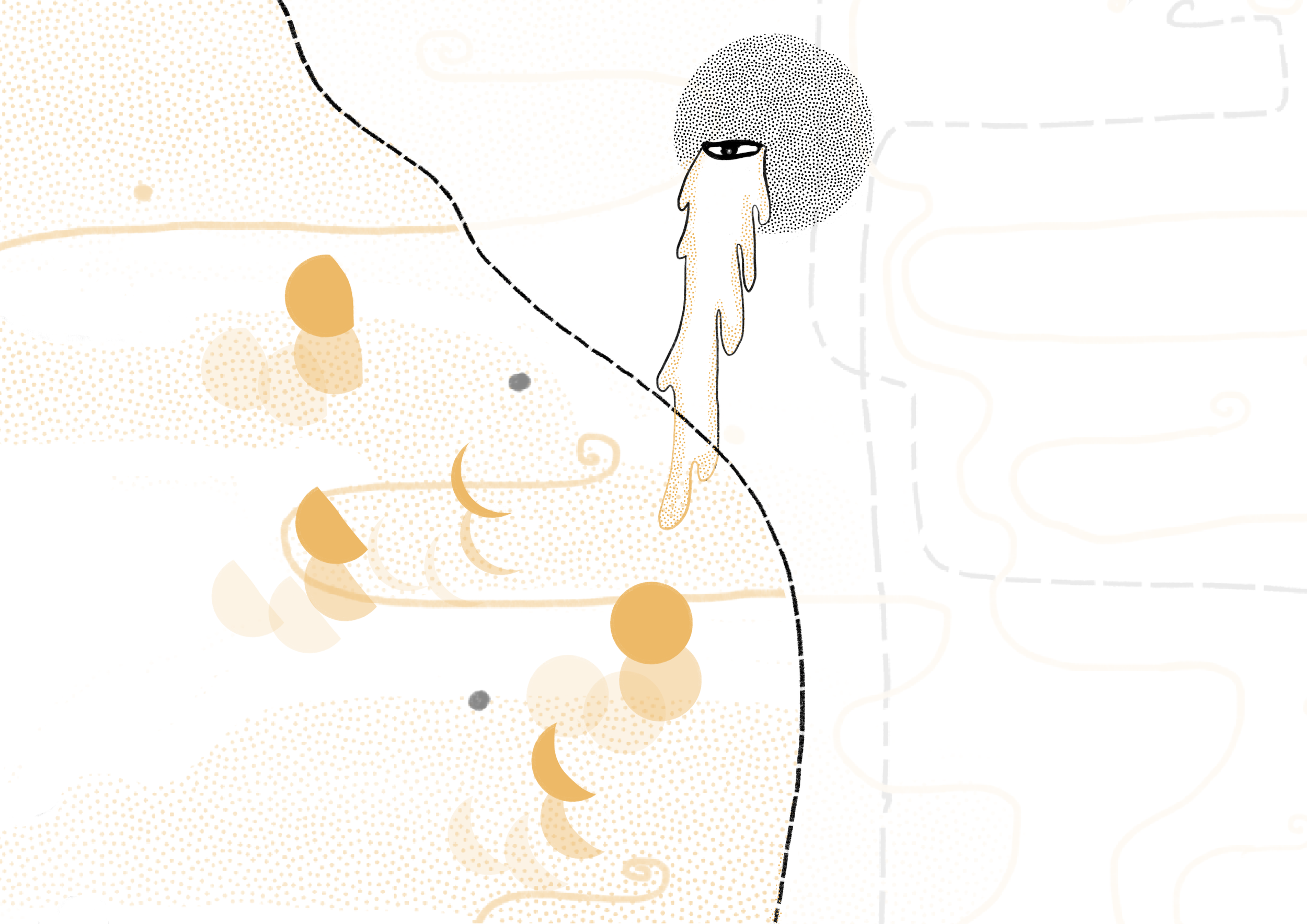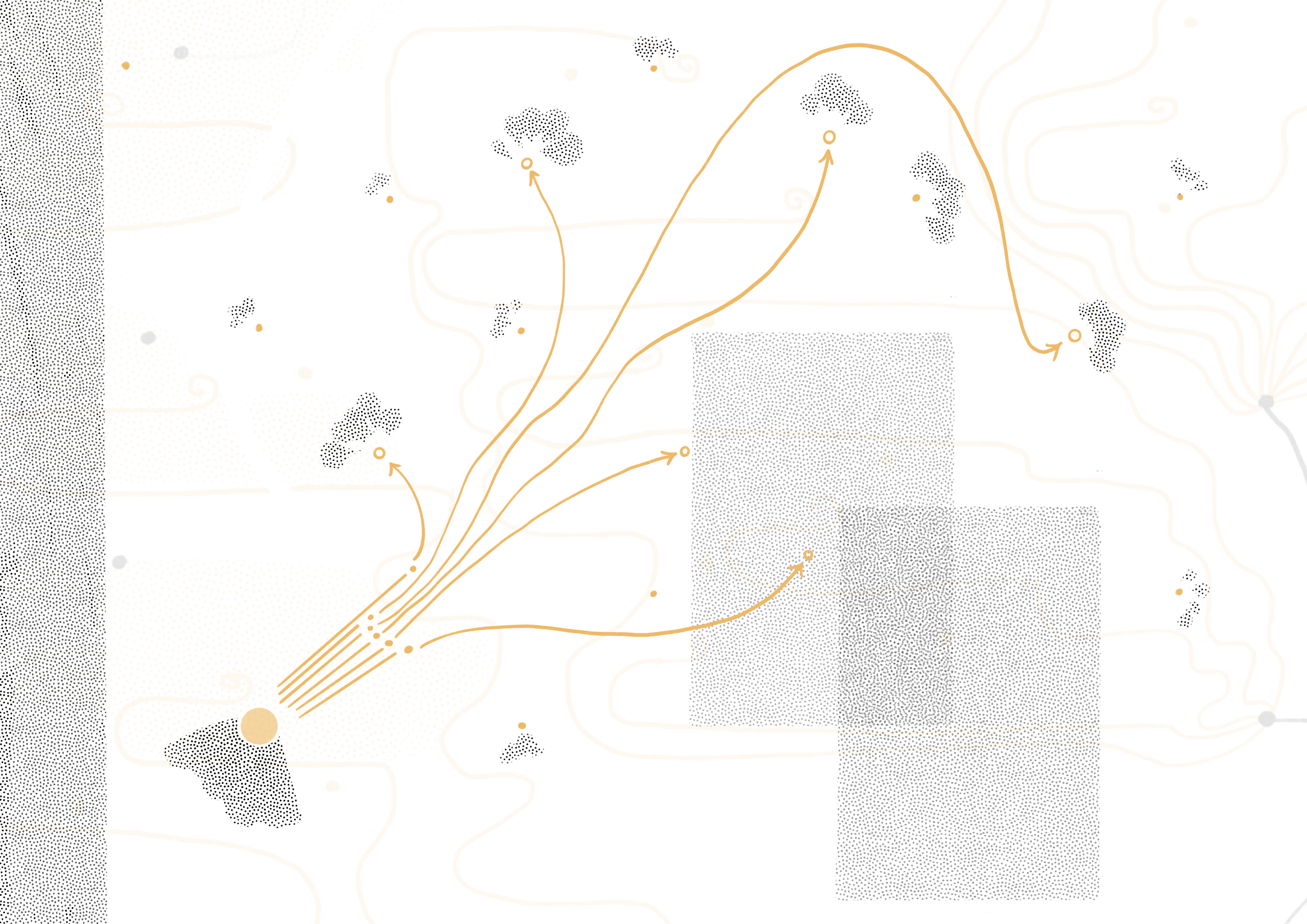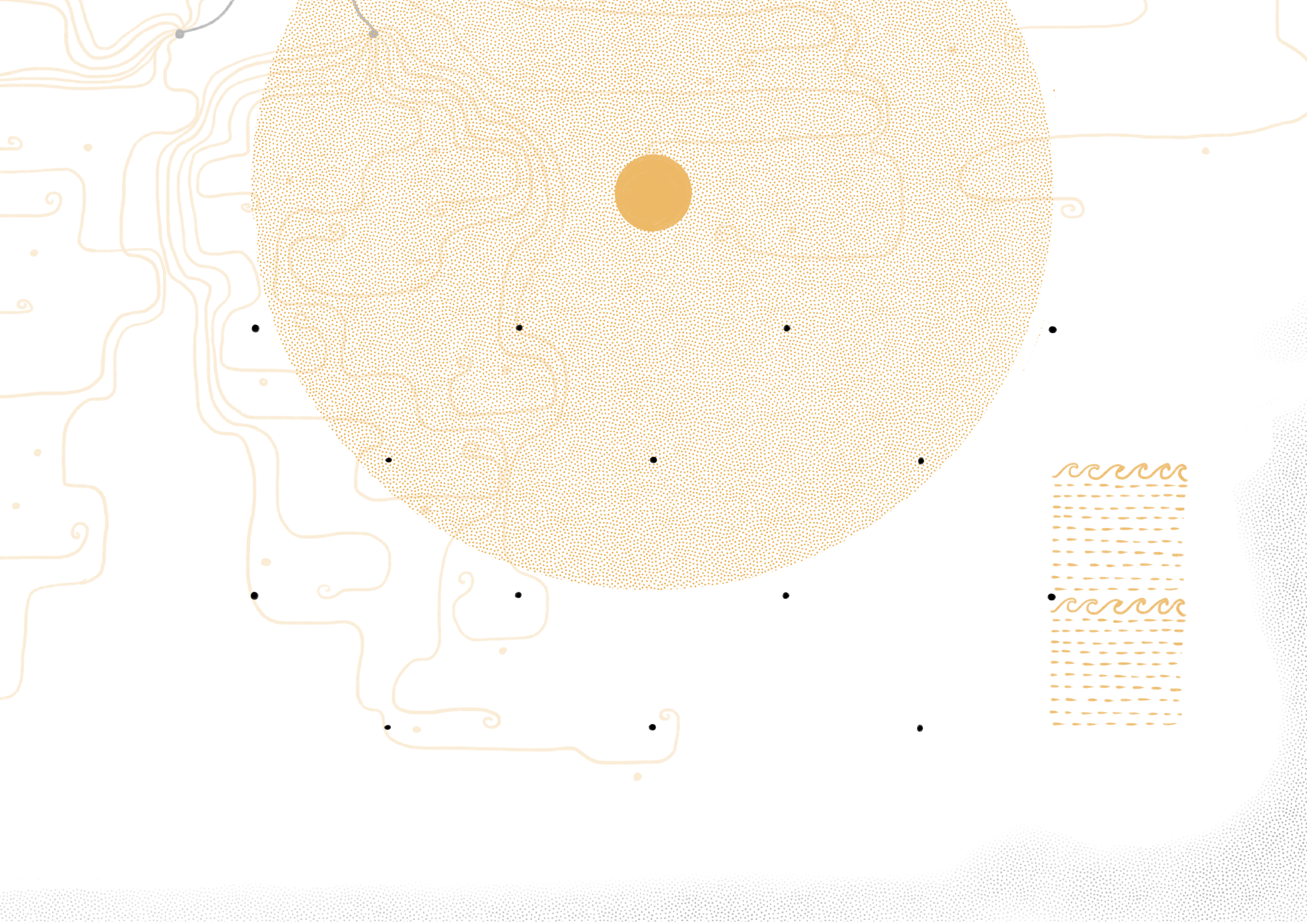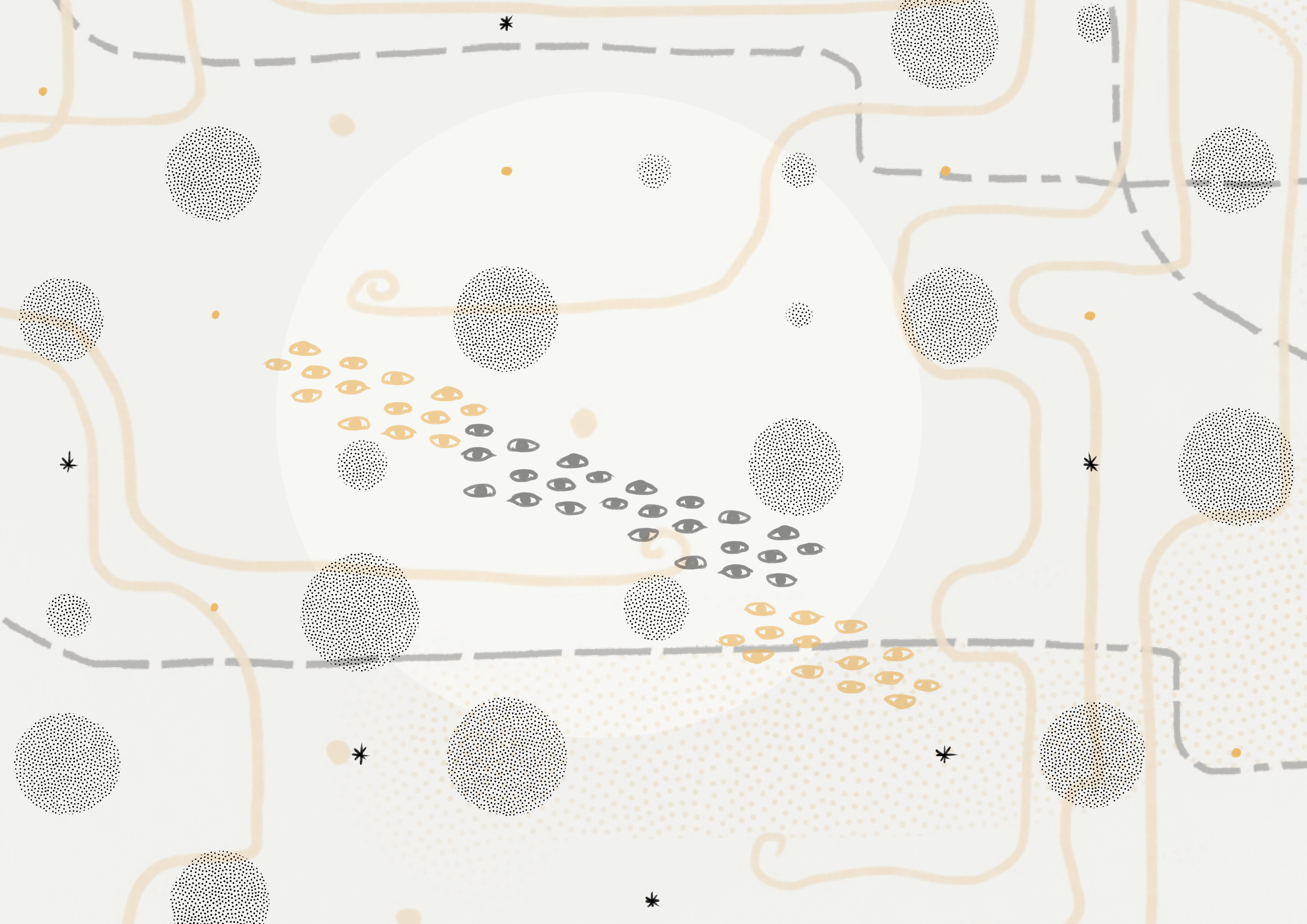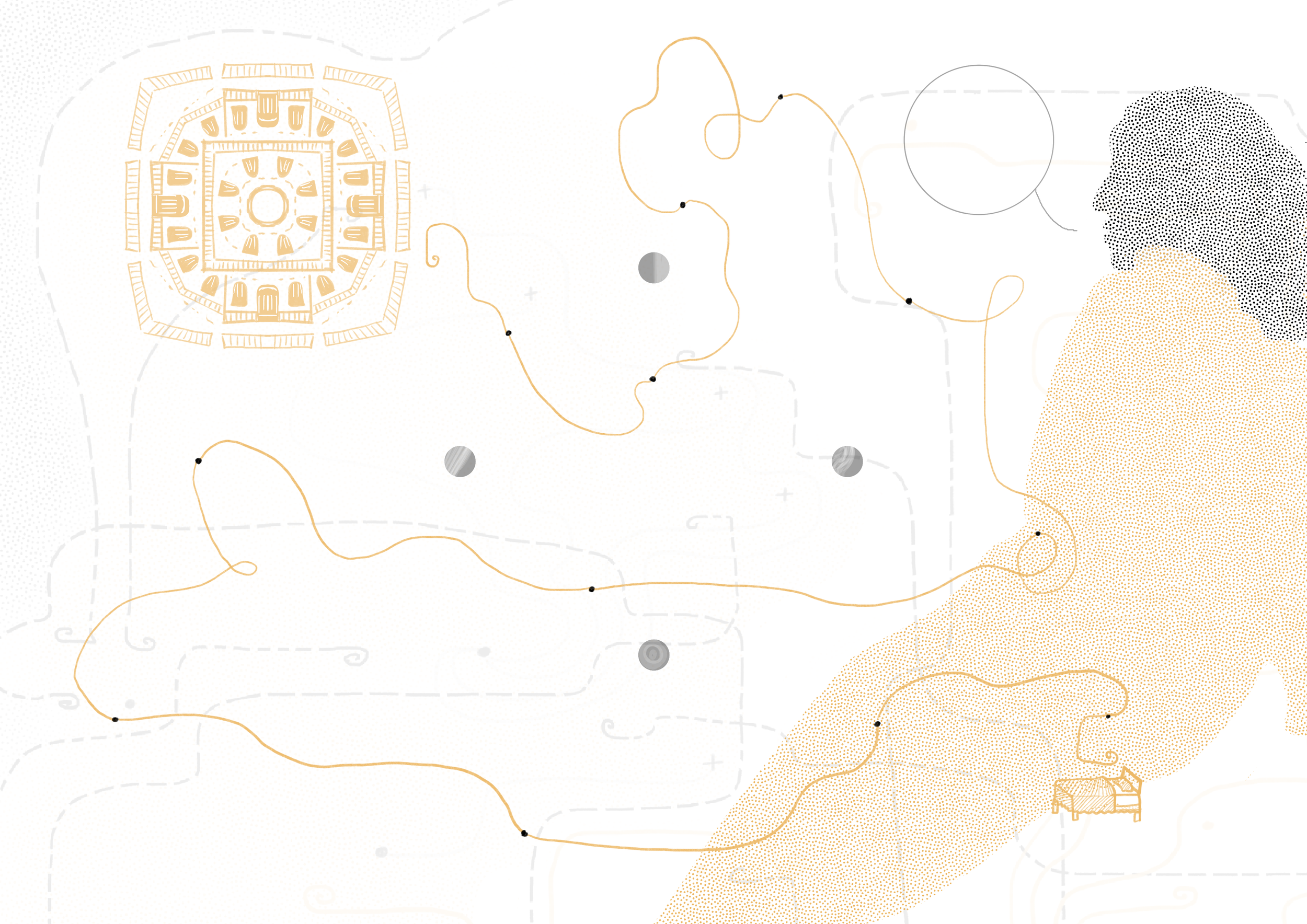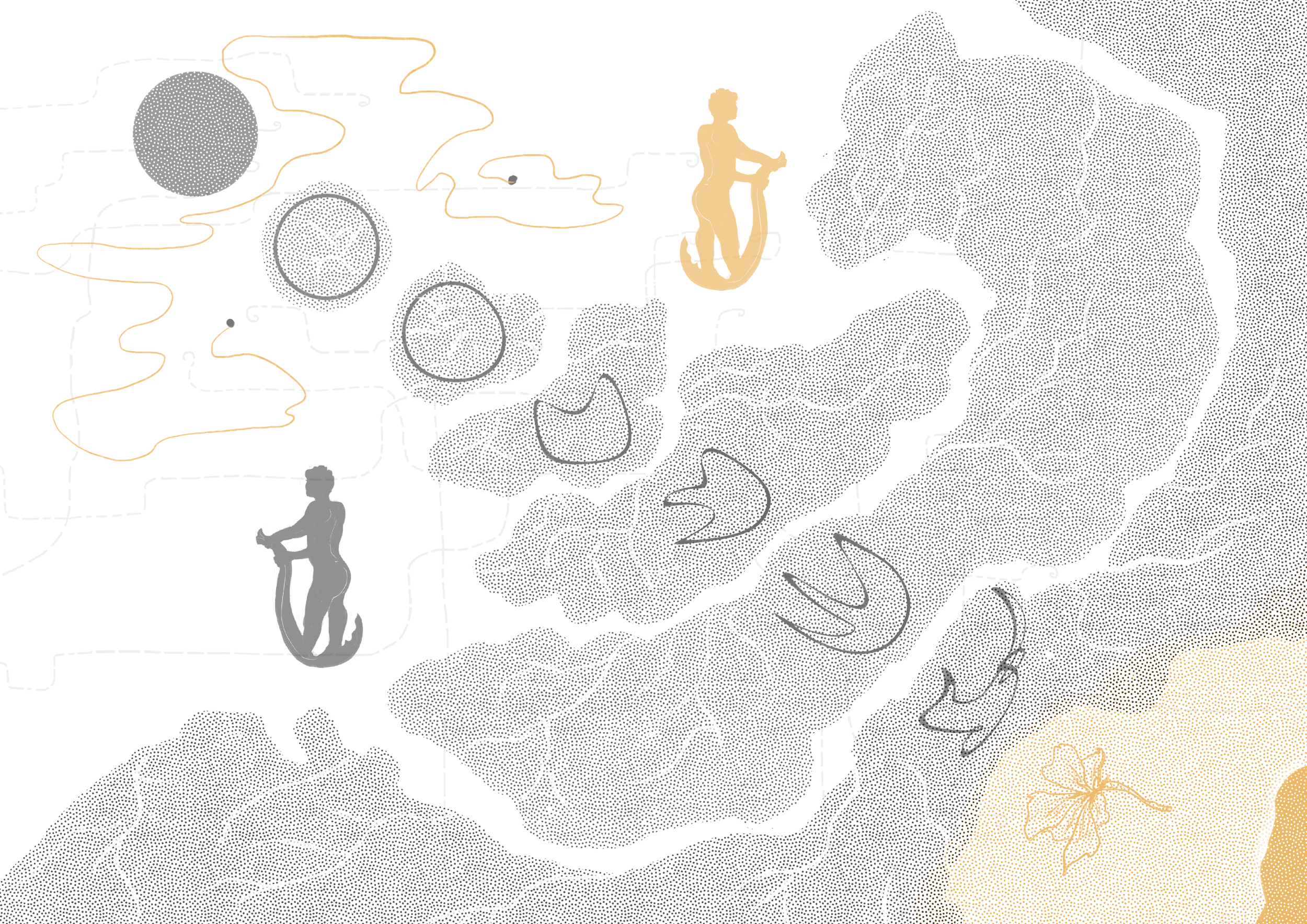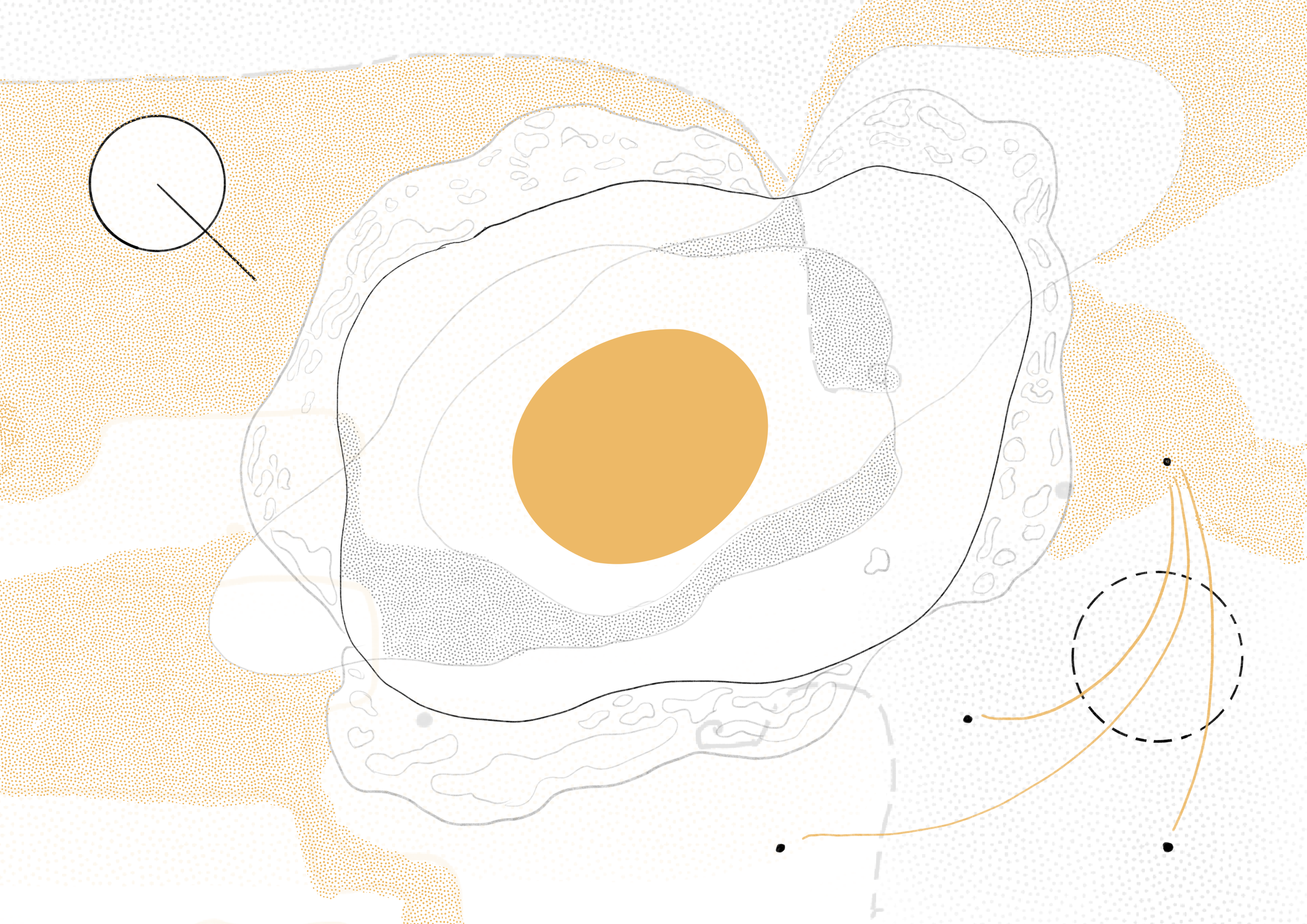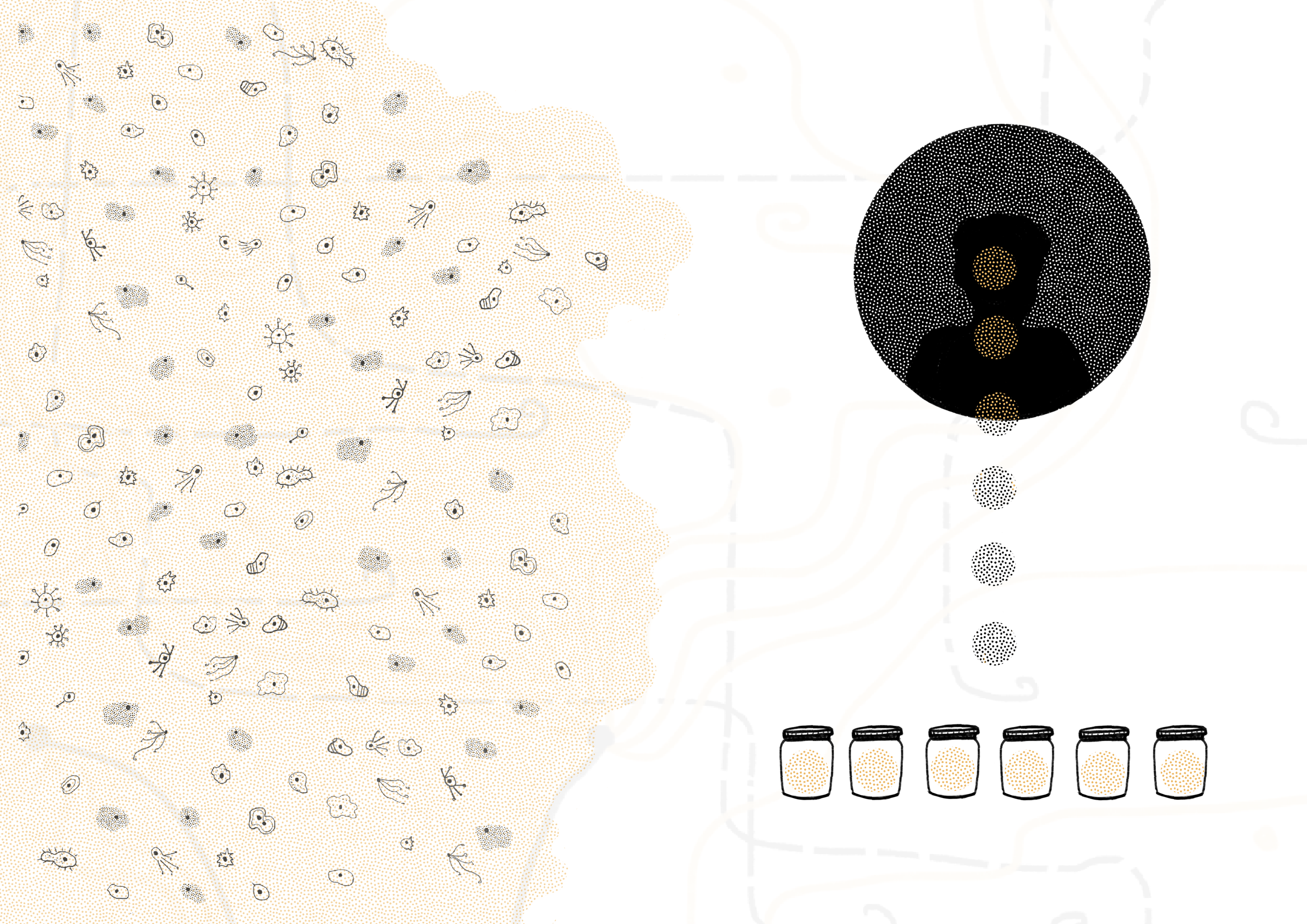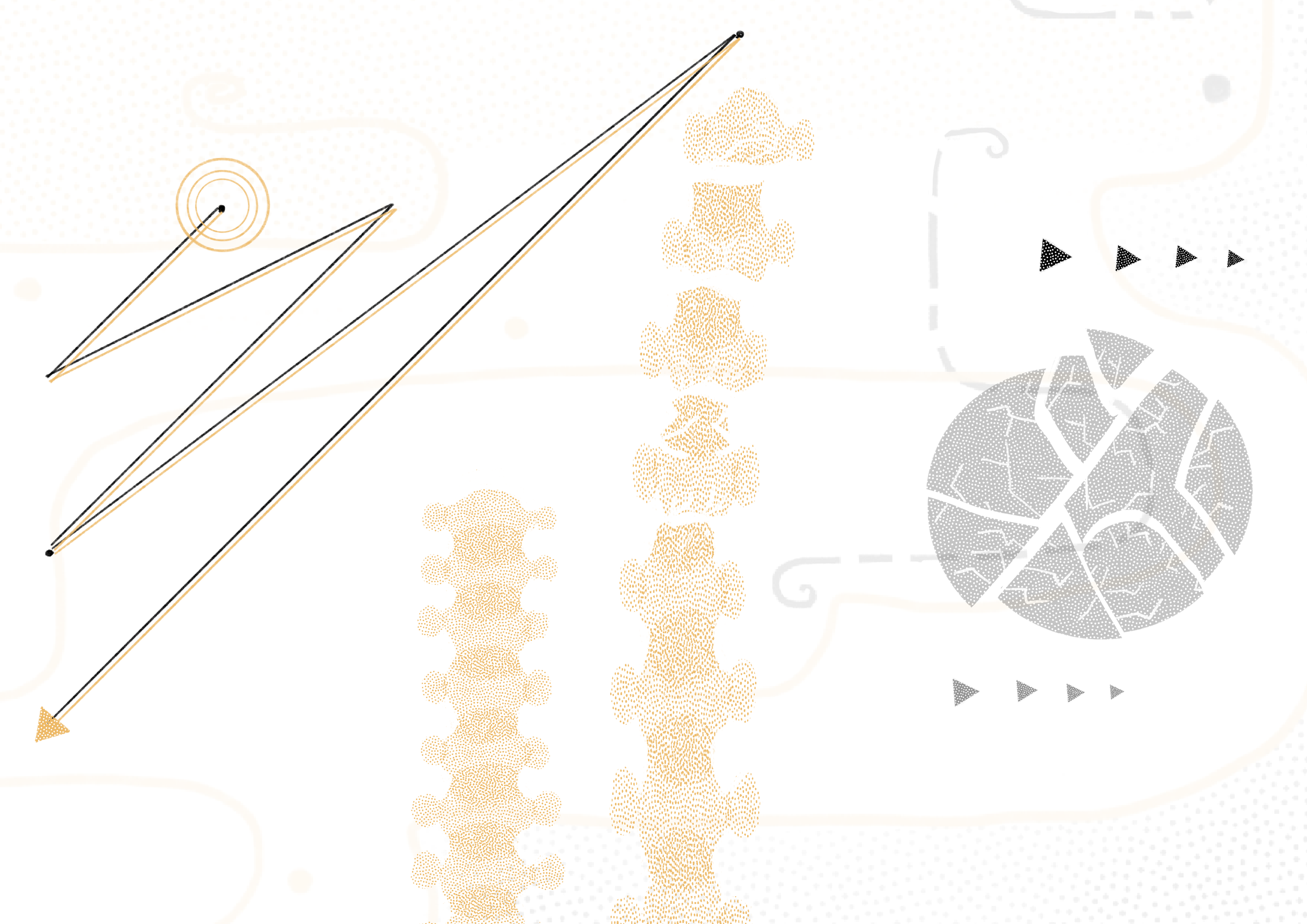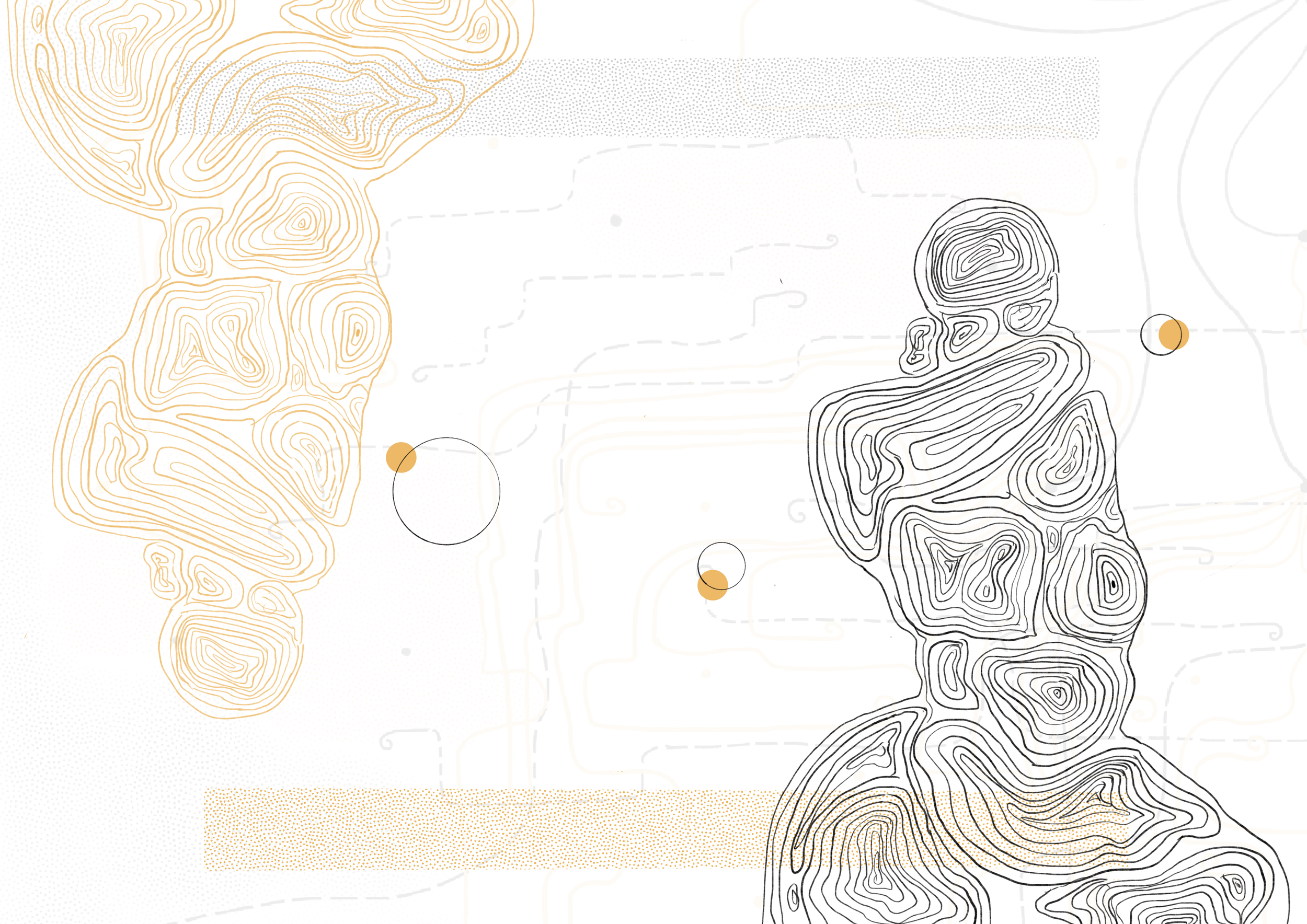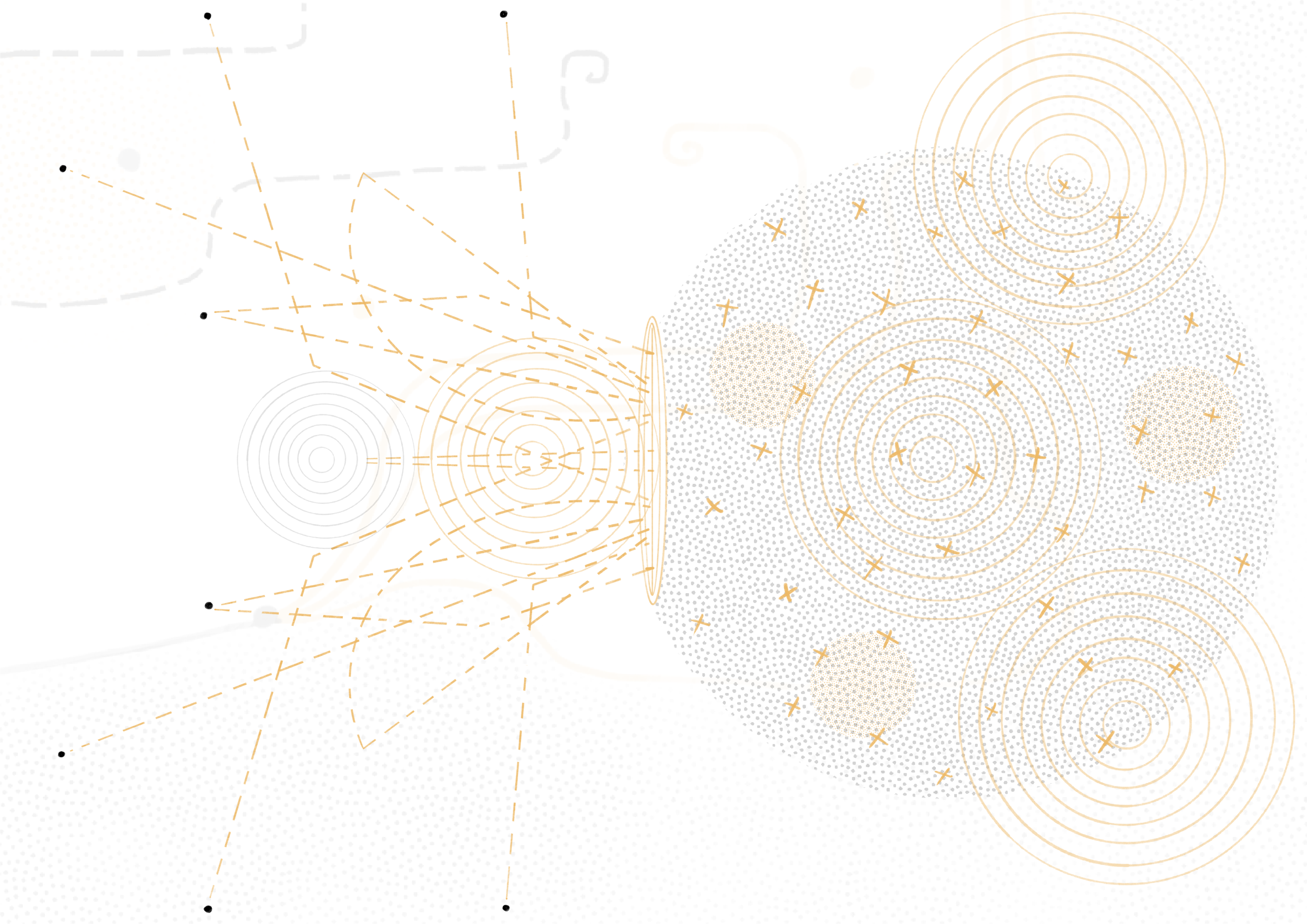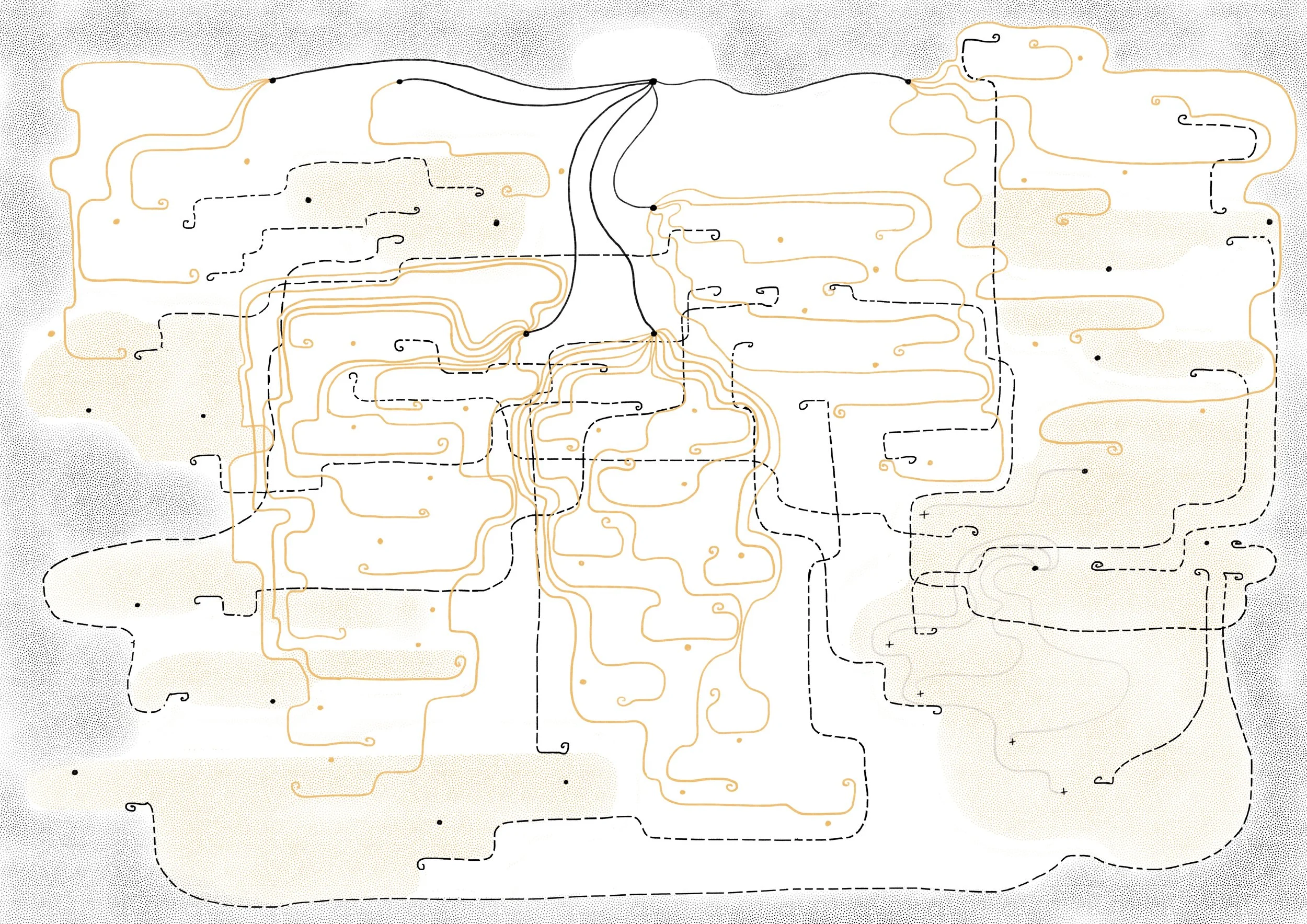Last(ing): Week 4
PARVATHI RAMANATHAN
In the weeks that the near-final essay drafts from ‘Last(ing)’ were coming together, co-editor Ranjana Dave and I observed the collection of ideas with wonder. While the words ‘last’ and ‘lasting’ may appear to point towards an apparent telos, we found ourselves in twelve processes that rejected any notion of culmination. Departures from a single word had accrued wide interpretations and pathways that stood in a state of still-forming. In an attempt to route the diverse themes in this edition back to their point of origin, we went back to basics. We made a mind map with the key themes and prompts. Soon enough, the interconnected patterns within the essays, many that had been clear to us, but also new unexpected relationships, began to emerge.
The curving, loopy lines of the mind map also influenced the work of illustrator Alia Sinha. Her artistic interpretation of the mind map – perhaps something you may want to zoom in and pore over – reflects the neural pathways channeled in this edition. Streams and brooks in the form of golden, black and gray curvilinear traces form unexpected shapes in between them. The shapes are not the point, but they too, become the point. In Alia’s own words, “the roots, shoots and off-lings of the lines come from one another, but at one time, they are their own thing. There is something ecological and fungal about them. The lines don’t end in arrows but have rounded edges that hold the words at their end. For me, this allows for a plurality of interpretation, rather than a sharp pointing. In these rounded edges, the negative spaces are also presences.”
The essays in ‘Last(ing)’ each used a bricolage of mediums and textures to meet their ideas. This is also reflected in the diversity of elements in the unique illustrations that accompany each essay. Using shimmers of gold and black in all their variation, using elements and imagery that flows into abstraction, Alia’s work responds intuitively to each essay. These illustrations that are hand-drawn on an I-pad screen, maintain the artist’s embodied process. Blurred dots, roughly wonky concentric circles, asymmetrical crosses, hark back to the flow of a human hand and a breathing body that held the digital pen. In the process of flowing with the intuitive association for each illustration, Alia noted to me, she had to consciously decide a moment to stop ‘doing’ and look at the image as ‘done’.
How do you choose a moment to stop, when it is not yet the end? In the state of ‘still-forming', are there several minute points that can be marked like little flag posts, to claim ‘already there’? Preparing final drafts of an essay or announcing that this edition is ready to be published was, in many ways, such a declaration.
The final three works of ‘Last(ing)’ especially represent this state of extended flux.
Jasmine Yadav’s photo essay reflects on what makes up an artist’s ‘practice’. Through an embodied exploration, she looks at the various moods, conflicts and meanings that stem out of a dancer’s present understanding of ‘practice’. How does the body archive the old and step into new beginnings?
Sanyukta Saha and Vrinda Misra look at the journey of a group that is still coagulating. In the framework of their theatre-based workshop engagements with a group of teenage girls, they introspect on the many processes they observe: inward-looking/outward-doing and inward-doing/outward-looking. They identify the achaanaks – moments of suddenness – where something is in flux, on their journey to an evasive last.
The final work of the edition by Vikram Iyengar is an intimate collage journaling pockets in space and time, written over the final months of his mother’s journey through Alzheimer’s Disease. In observing the shifts in her memory, and in minute aspects of his own movement practice, he asks where memory may be stored in the body.
